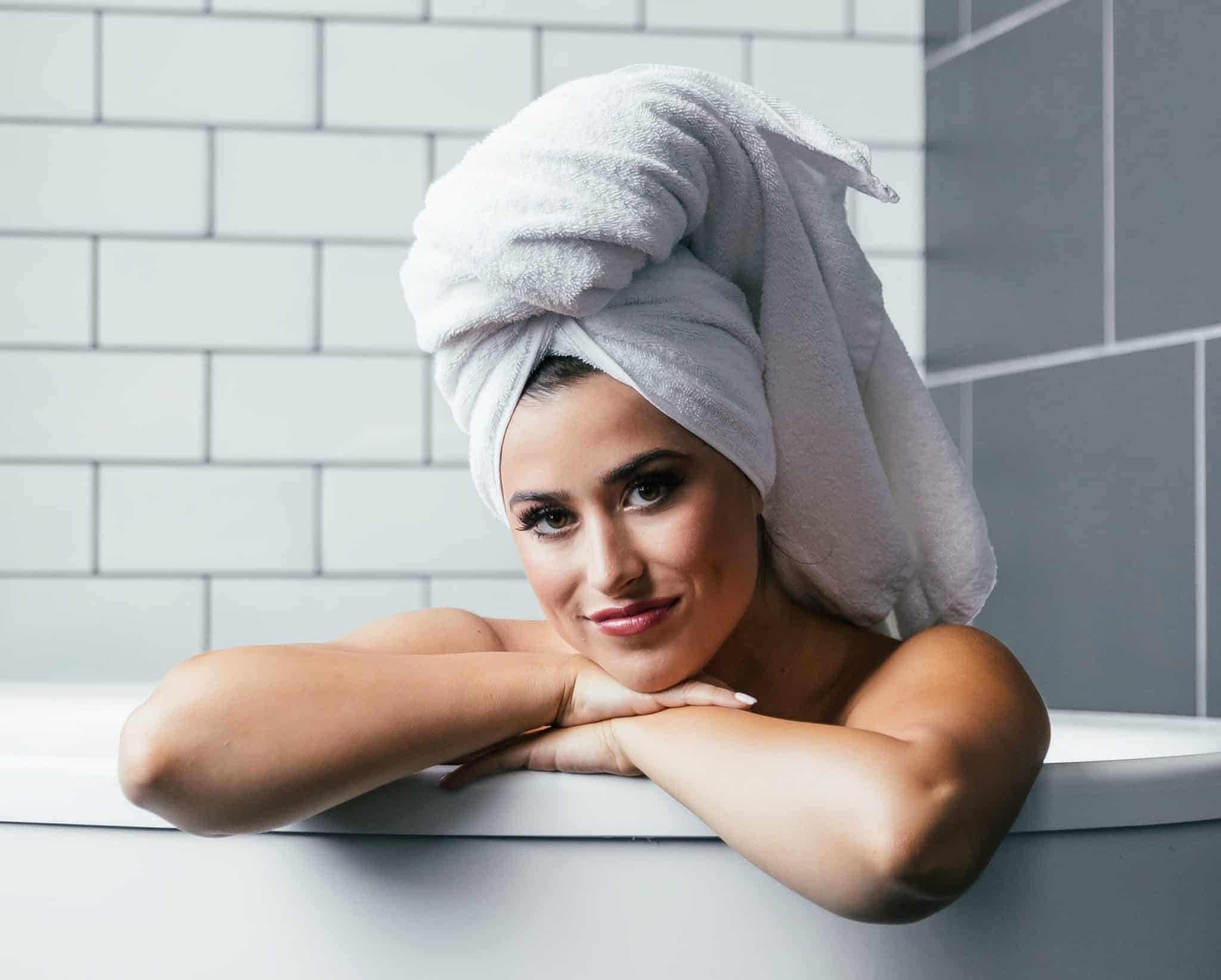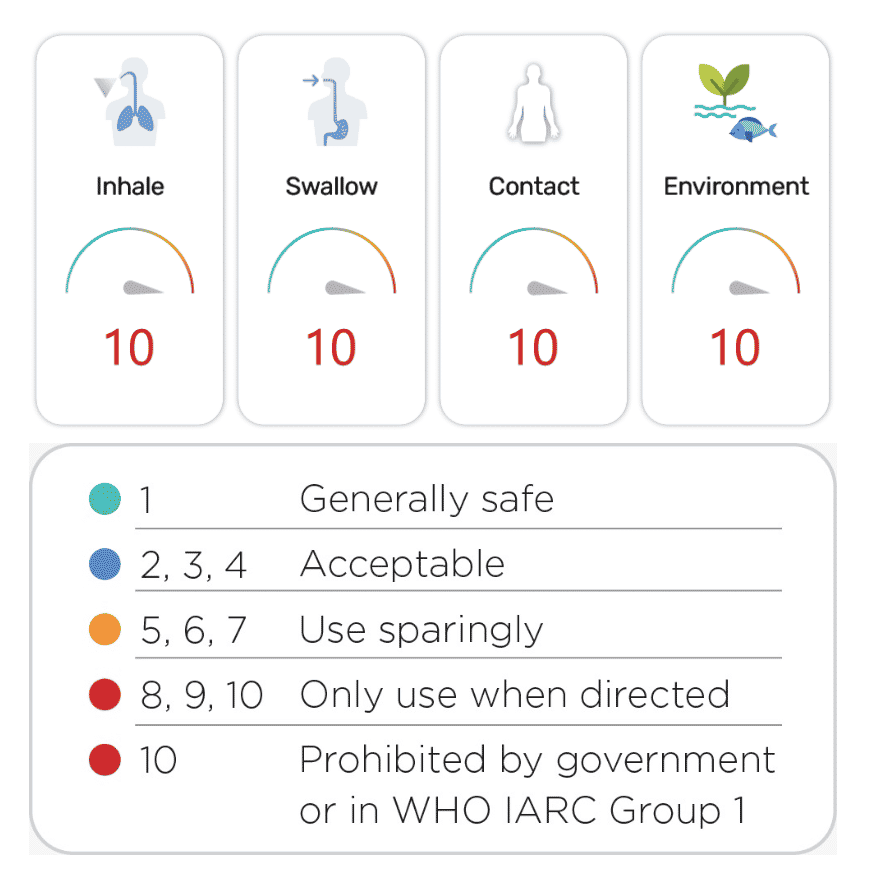Ingredient labels on beauty products can be extremely confusing, and it may feel like you need a degree in chemistry to understand terms like Glycolic acid and parabens. The chemical jargon is due to the usage of International Nomenclature of Cosmetic Ingredients (INCI) system to standardize the naming of ingredients globally. The results? It makes no sense to shoppers.

We come into contact with more than 500 chemicals and toxic substances everyday, according to Medical News Today. It is impossible to avoid chemicals completely, but what we can do is be aware of ingredients that are linked to serious health issues and avoid products that contain certain harmful ingredients and reduce our exposure to them. To make things easy, we have compiled 10 beauty ingredients that you should be wary of.

1. Parabens
Parabens are commonly found in shampoos, moisturizers and body lotions

Rating on 1Source:
Use:
- Preservatives
- Fragrances within cosmetic products
Warnings:
- May cause an allergic reaction and irritation to skin
- Parabens have been found to interfere with hormone functions as it interferes with estrogen, which causes cancer cells to divide
Laws and Legislation:
- In Taiwan, the “Standard Table for Cosmetic Preservatives” is limited to 1%
2. Triclosan
Triclosan is commonly found in consumer products, including toothpaste, soaps, detergents and sunscreens.

Rating on 1Source:
Use:
- Antiseptic / Disinfectant
- antibacterial and antifungal agent
Warnings:
- may cause low-grade colonic inflammation and exacerbate colon-associated diseases
- Persistence in the human body despite only being exposed to small concentrations
Laws and Legislation:
- FDA has removed Triclosan from GRAS as of 19 Dec 2017
- Banned in the EU market since 2017
- Banned in all sunscreen products from January 1 2020 by the Republic of Palau to protect its coral reefs and UNESCO World Heritage Site
3. Phenoxyethanol
Phenoxyethanol is a colorless liquid with a pleasant odor, it’s most famous appearance in Kylie Jenner’s skincare line. This naturally found or synthetically manufactured compound is a glycol ether used as a perfume fixative, insect repellent, antiseptic, solvent, preservative.

Rating on 1Source:

Use:
- Actively kills and inhibits the growth of unwanted microorganisms which may be harmful
- Antioxidant
- Prevents growth of unwanted microorganisms
- Used to treat, alleviate, cure or prevent sickness
- Preservative-
Cons:
- May cause central nervous system toxicity in newborns
- May cause a localized toxic sensation of burning and itching to exposed area
- May be responsible for starting or make neuronal cell damage worse
Laws and Legislation:
- EU SCCS has classified phenoxyethanol as safe for use as a preservative with a maximum concentration of 1.0%
- Banned in all sunscreen products from January 1 2020 by the Republic of Palau to protect its coral reefs and UNESCO World Heritage Site
4. Hydroquinone
Produced as an inhibitor, an antioxidant, and an intermediate in the synthesis of dyes, motor fuels, and oils; in photographic processing; and naturally in certain plant species, Hydroquinone is a phenol derivative with antioxidant properties.

Rating on 1Source:
Use:
- Skin lightening agent
- Antioxidant – Reduces oxidation to prevent the formation of free radicals which may be harmful to health.
How it works: The chemical inhibits skin discoloration process by interacting with melanin producing cells and decreasing production of pigment
Warnings:
- It is effective only temporarily and may lighten the surrounding skin, creating “halo” spots, or white spots on your skin
- Hydroquinone is a phenol derivative with antioxidant properties that can cause toxicity in several organs
5. Formaldehyde
Formaldehyde is a colorless poisonous gas synthesized by the oxidation of methanol and used as an antiseptic, disinfectant, histologic fixative, and general-purpose chemical reagent for laboratory applications. It is commonly found in nail polish, hair products, moisturizers.

Rating on 1 Source:
Use:
- Serves as an antimicrobial preservative that actively kills and inhibits the growth of unwanted microorganisms which may be harmful
- Acts as a stabilizer and retains the physical characteristics of cosmetics by ensuring the mixture remains in an even state
Warnings:
- Toxicity
- Volatility
Laws and Legislation:
- In 2011, the US National Toxicology Program described formaldehyde as “known to be a human carcinogen”
- Classified as a Group 1 carcinogen by the International Agency for Research on Cancer
- Hong Kong Consumer Council has implied that formaldehyde should not be present in school uniform materials





